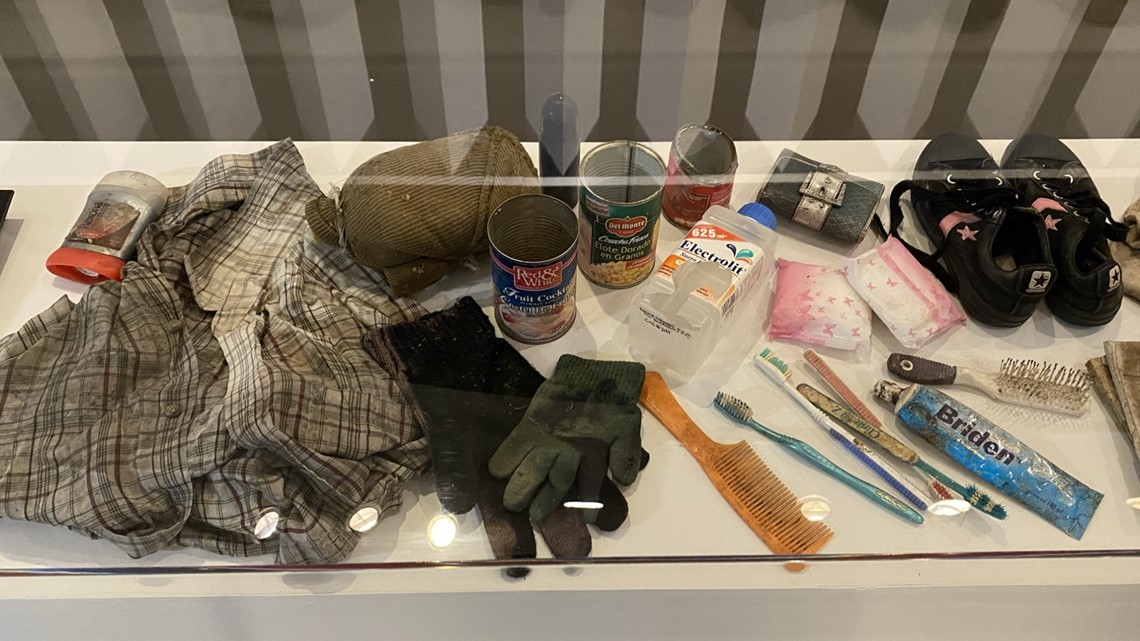WASHINGTON — Many museum exhibitions we visit highlight events of the past.
These events can be distant and abstract to us; disconnected from modern society by virtue of their separation of time.
The latest exhibit to open at one of Washington's museums, however, offers a living history. It is a presentation of the past and present, while the future is still to be written.
The beginnings of a border wall between the United States and Mexico, as shown in 'The Wall/El Muro' exhibit at the National Building Museum, date back to 1880. The exhibit spans the 141-year life and evolution of the border wall all the way up to the present day.
"We see the wall as one of the most significant built environment issues of the past century," said Aileen Fuchs, executive director of the National Building Museum.
'The Wall/El Muro' exhibit lives up to that significance by fusing its standing as an enormous architectural achievement with its collateral effect on the people of the United States and Mexico and the desert landscape.
"The border in most places is just an invented idea, said Fuchs. "This exhibit is going to give you such an immersion into what's a border? What's a wall? The evolution of that as a policy and the aspect of the wall as a construction project."
Fuchs says the exhibit was supposed to open earlier than November but was delayed due to the COVID-19 pandemic. It opened on November 6 and will stay open the entire year.
Part of the exhibit includes an actual former portion of the border wall. It is a chain-link fence with barbed wire snaked across the top.
"As a museum that’s interested in architecture, building and design, it's interesting to look at something like this," says Fuchs while pointing to the barbed wire fence display. "(People wonder) what does the border wall look like? And what did it look like? What types of materials are used?"
A powerful portion of the exhibit includes personal effects found in the Sonoran desert, where migrants have left things behind as they made the perilous journey. This part of the display is on loan from the Undocumented Migration Project. All the artifacts have a story. Did any of the people who left those articles behind die trying to make the journey? Are they living successfully in the U.S. now? Were they deported?


Also among the displays is a special room that is a “soundscape.” It is a room with a bench that has a wall showing a portion of the border wall and also speakers that play a recording taken along the wall. The sound includes a dull whirring sound, which you come to learn is a US Customs and Border Patrol (CBP) drone. Portions of the U.S./Mexico border are among the most surveilled places on Earth.
"I think any great museum experience compels you to walk out of that room, that space, that gallery and just look at your world in a different way," said Fuchs.
Disconnecting the border wall from its political context can be an arduous task. However, the Building Museum skillfully navigates a non-partisan approach to the issue. The exhibit does include, for example, how many miles of fencing were added and replaced under each recent presidential administration and how many CBP officers have been hired over the years.
"To us, this is not about ever taking a political position on any issue. As a museum we're able to create this space and this platform to think about this through a different lens," said Fuchs. “Maybe the next time you see (the border wall) in the news, it's not just this policy conversation. You kind of stop and think about it. You want to get involved. You want to learn more."
26-year-old Breonna Taylor was shot and killed by police. A new portrait of her now hangs at the National Museum of African American History and Culture in D.C.

